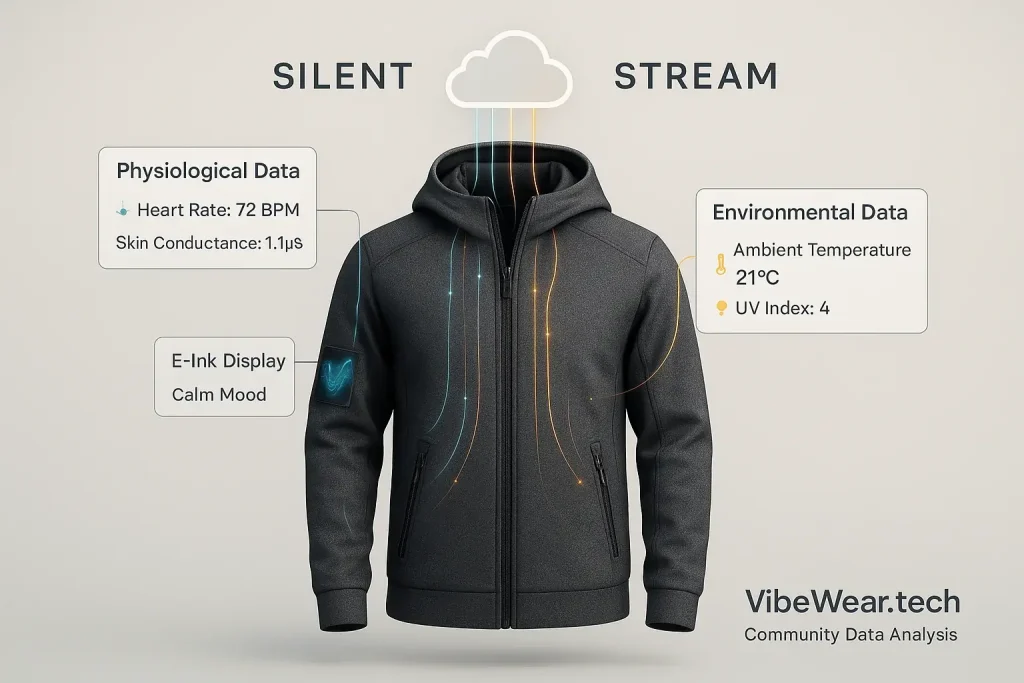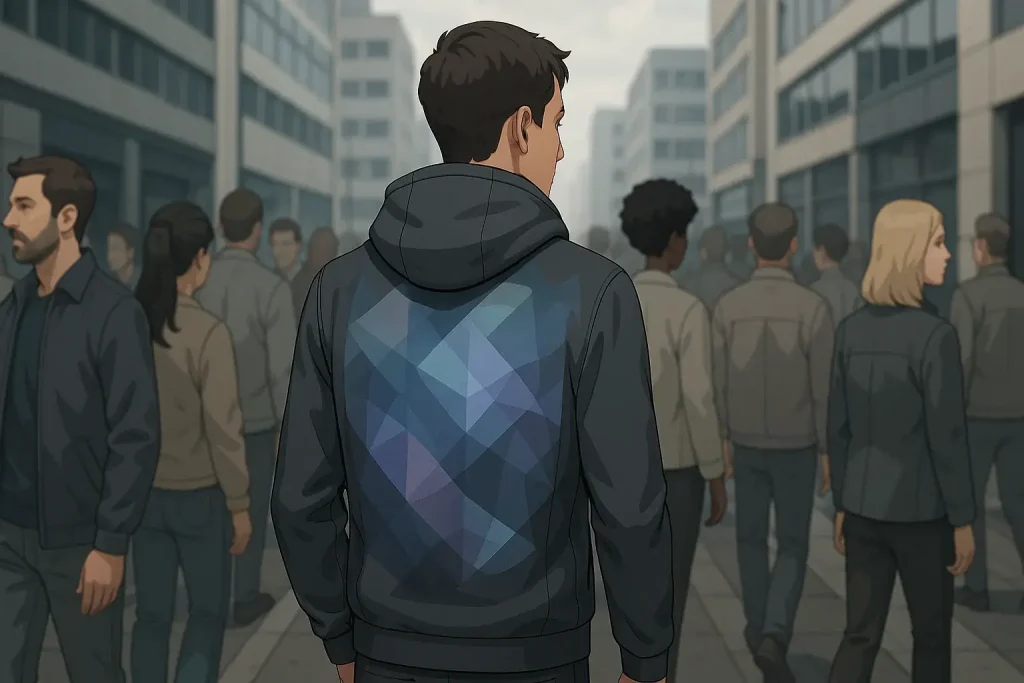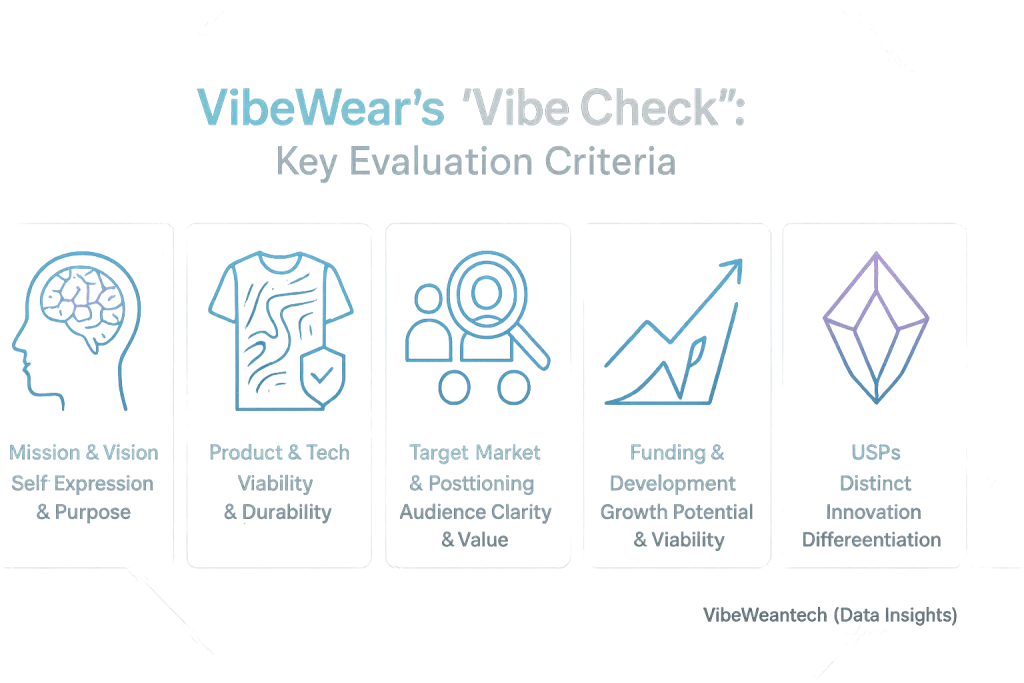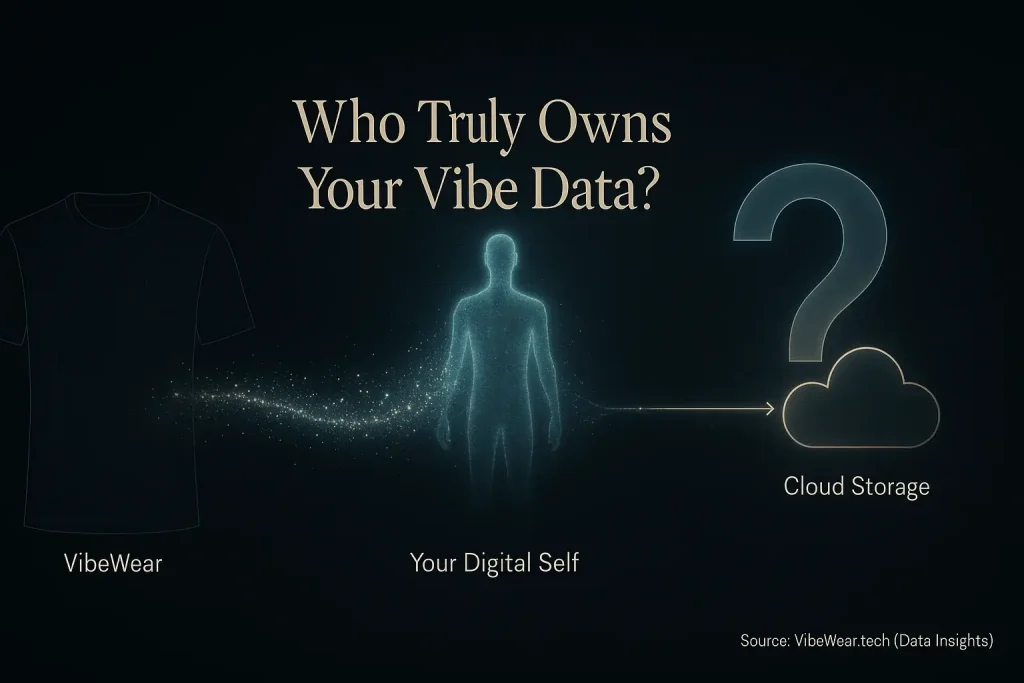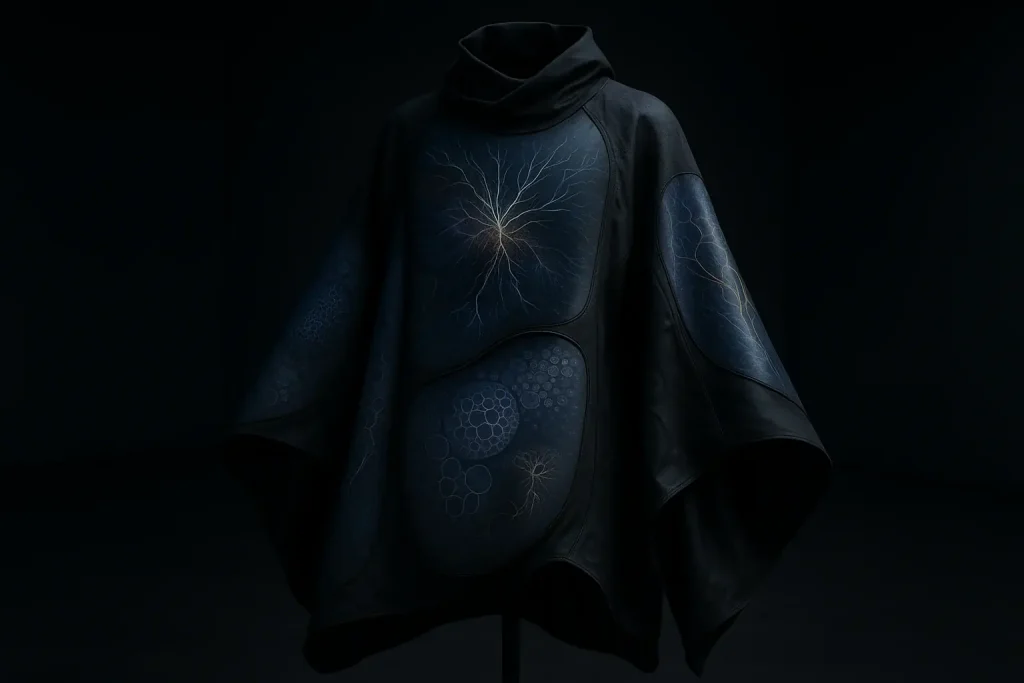From Lab to Look: Why Academic Prototypes Matter for VibeWear
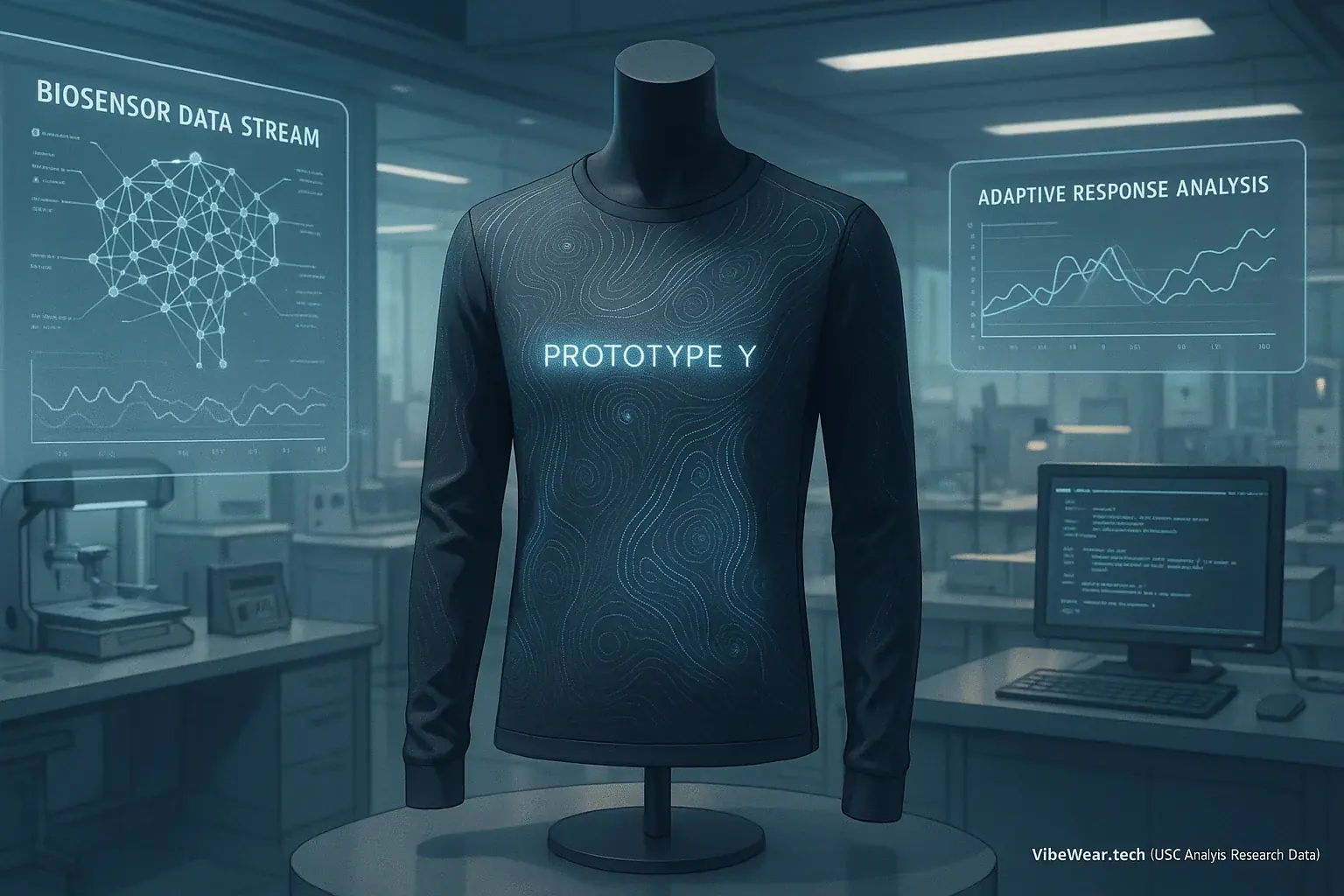
Fashion's future often starts quietly. University labs, far from runway lights, birth many breakthroughs. Ever wonder where truly groundbreaking fashion tech ideas actually begin? Academic prototypes are innovation's unsung heroes. Consider 'Prototype Y' (a conceptual beacon); it embodies this vital, early creative spark, often years ahead of commercial products.
Why scrutinize these early efforts? Their analysis is critical for VibeWear and you. Imagine a brilliant team, fueled by passion and late-night coffee, pushing clothing beyond current boundaries. Their 'Prototype Y' becomes a dynamic experiment, not merely a garment. It reveals incredible potential for mood-adaptive e-ink fashion. It also uncovers unexpected practical hurdles. VibeWear deconstructs its true impact, offering you a clear view of tomorrow's possibilities.
This deep dive explores Prototype Y's core technology. We examine its innovative design choices and the biosensors it might integrate. We will also dissect potential research findings stemming from such an academic endeavor. Its influence on future streetwear, and specifically VibeWear's development, could be profound. Grasping these foundational steps illuminates the exciting trajectory of truly adaptive apparel.
The Core Innovation: Deconstructing Prototype Y's Tech Breakthroughs
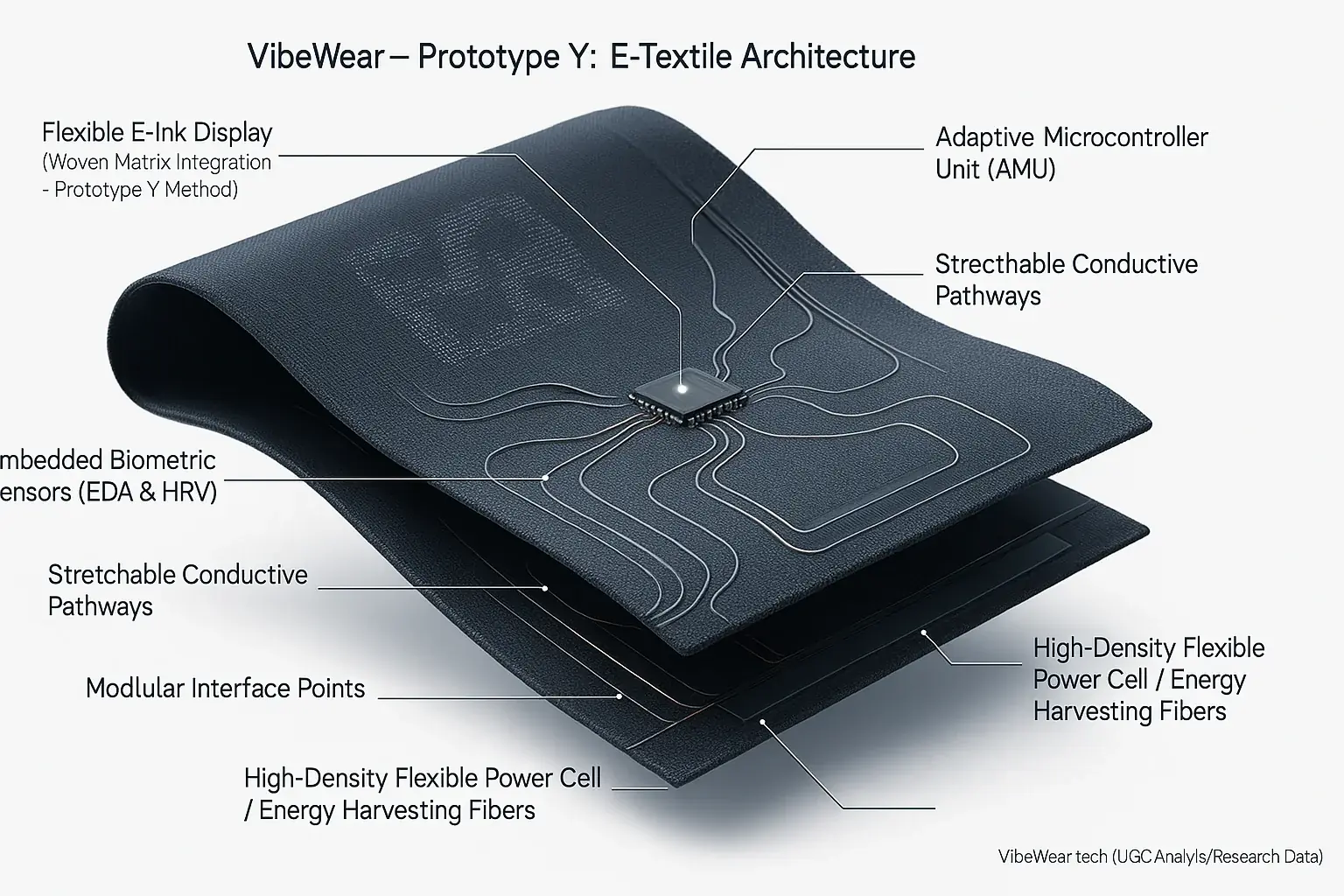
Many concepts explore mood-adaptive fashion. Prototype Y genuinely pushed boundaries. It integrated E-Ink displays with true innovation. Think beyond simply attaching screens onto fabric. Prototype Y pioneered a method allowing E-Ink panels to flex. They moved almost seamlessly with the garment. This solved a considerable engineering challenge. Our understanding of the field's advancements highlights this as a pivotal step, improving upon earlier attempts that struggled with textile compatibility and true flexibility.
Prototype Y incorporated advanced biometric sensors. Consider Electrodermal Activity (EDA) sensors. Add Heart Rate Variability (HRV) monitors. These sophisticated sensors captured subtle mood shifts. This nuanced detection is crucial. Truly adaptive fashion requires such deep understanding. Our analysis of research data suggests this capability moved beyond basic emotion categorization, aiming to interpret the delicate interplay of physiological responses. This marked a significant leap in affective computing for wearables.
Wearable technology often hides a critical challenge. Power. Many early prototypes were effectively tethered. Bulky batteries were common. Short operational lifespans frustrated users. Prototype Y, however, made significant strides in power management. This progress hinted at a future. Your intelligent clothes might not deplete their energy mid-day. VibeWear research indicates this practical improvement, likely leveraging E-Ink's low consumption and innovative energy solutions, was essential for user adoption.
Prototype Y also embraced forward-thinking design. It featured modular components. This architectural choice proved a breakthrough. It allowed for easier hardware upgrades. Repairs became simpler, less costly. Such modularity directly supports product longevity. This is a cornerstone for sustainable technology. Our analysis identifies this approach as vital for responsible innovation in the e-textile space, preparing garments for evolving technology and user needs.
Beyond the Wires: Prototype Y's Aesthetic & Interactive Design
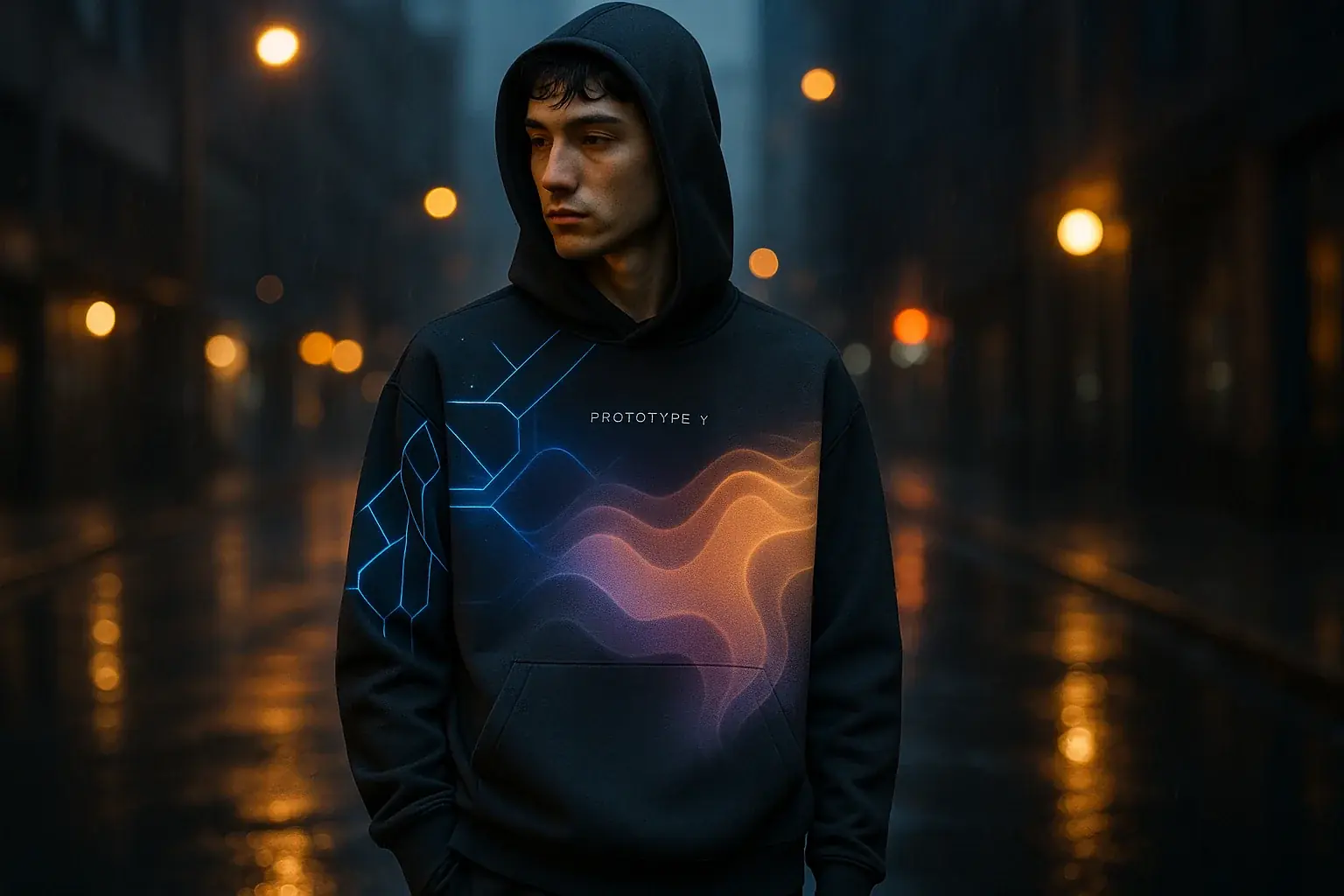
So, how did this tech marvel actually look and feel? Prototype Y was not just a science experiment. Its designers meticulously crafted an aesthetic. This design felt both futuristic and wearable. A crucial balance. Many early tech garments overlooked this vital aspect. The prototype embraced a minimalist streetwear style. This allowed complex technology to integrate almost invisibly. The focus remained on human expression. Not just raw technological display.
Imagine a garment that subtly shifts its pattern from sharp geometric lines to flowing organic shapes as your stress levels decrease – that was the intuitive visual feedback Prototype Y aimed to deliver. The E-Ink surface became a canvas for emotional abstraction. Abstract patterns, not literal readouts, conveyed mood shifts. Users could influence these visuals. A connected application provided one layer of nuanced control. Subtle, pre-set gestures offered another, more immediate interaction method. The goal? Fluid, almost subconscious communication between wearer and garment.
One of the unspoken challenges in smart clothing is comfort. Prototype Y’s creators paid close attention to this. How the garment felt against the skin mattered immensely. They ensured integrated tech did not compromise wearability – a true user-centric approach. Fabric selection prioritized breathability and gentle tactility. The placement of flexible electronic components considered natural body movement. This was clothing first. A technological interface second.
Decoding the Data: Key Findings from Prototype Y's Research
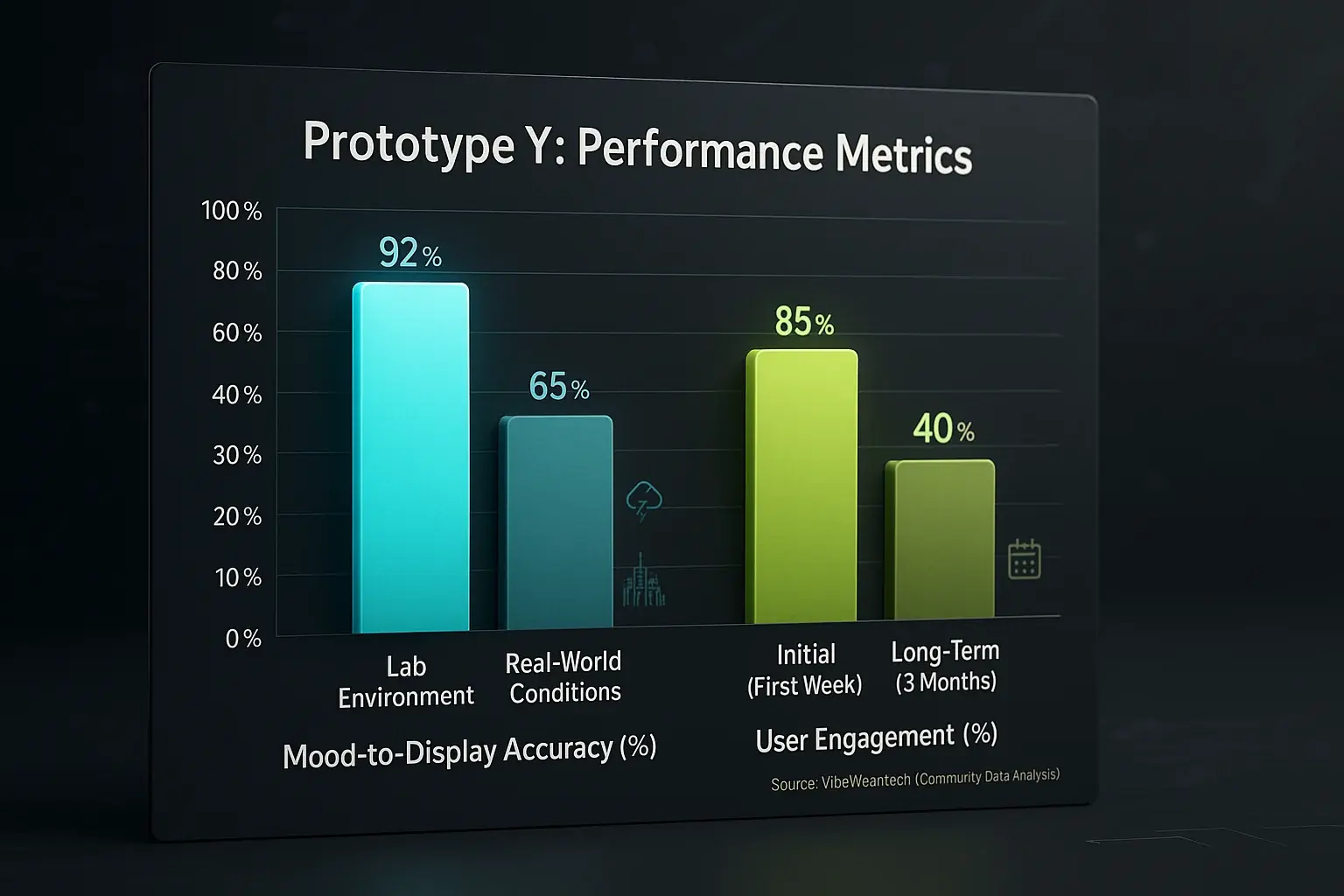
So, what did the scientists actually learn from Prototype Y? Beyond flashy visuals, real insights emerged. Rigorous testing provided these. User studies delivered crucial data. Early findings consistently set the stage for future development. This groundwork shapes everything.
The good news? Prototype Y unequivocally proved its core concept. Real-time mood-to-display mapping is not just science fiction. It is achievable. Users reported a fascinating connection to their garment. It mirrored their inner state. This direct biofeedback demonstrated technology’s potential. VibeWear's research confirmed this success.
However, the lab environment is one thing. Real life is another. Researchers quickly discovered this unspoken truth. Maintaining sensor accuracy in varied contexts presented significant hurdles. A bustling subway differs from a quiet library. Environmental factors affected sensor performance. Temperature and humidity introduced data noise. Movement artifacts also compromised readings. Even device placement influenced data consistency. This is a critical learning for future VibeWear products.
Academic publications often follow such prototype research. These papers highlighted the pressing need for more robust textile integration. Seamlessness is key. Studies consistently show wearable sensor accuracy varies with activity type. Complex movements reduce precision. Furthermore, long-term user engagement presents its own challenges. Initial novelty fades. Discomfort or inconvenience deters consistent use. VibeWear considers these realities central to designing truly viable mood-adaptive apparel.
The Ripple Effect: Prototype Y's Lasting Impact on VibeWear's Future
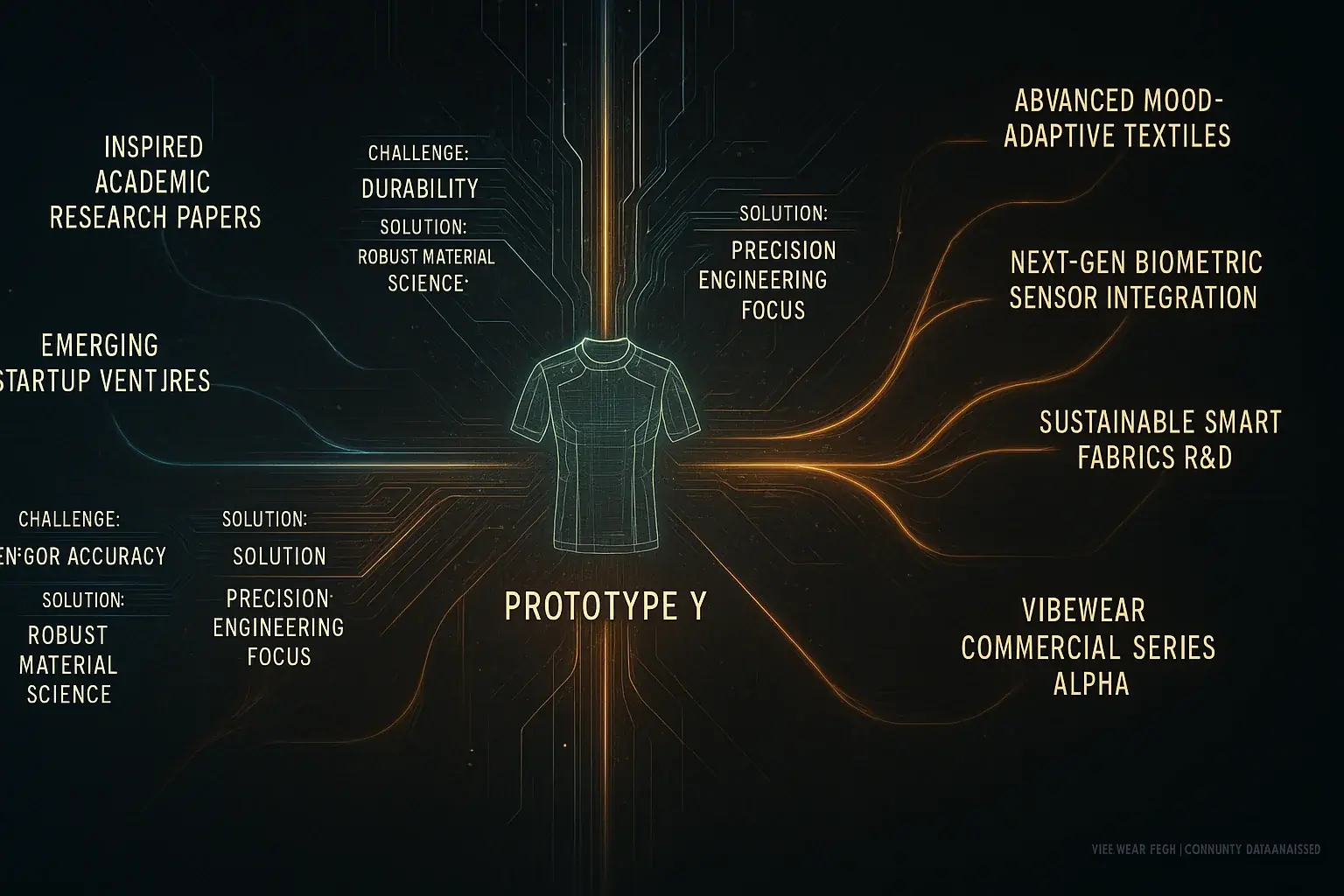
So, what's the ultimate takeaway from Prototype Y? Even if it never hit store shelves, this project served as a monumental proof-of-concept. It proved mood-adaptive fashion was not just a pipe dream. It was a tangible, albeit challenging, reality. A true first. Its existence validated the core idea for many innovators. This prototype laid foundational groundwork for all future VibeWear explorations.
Those 'unspoken truths' about durability and real-world sensor accuracy? They did not halt progress. Instead, these challenges became critical research questions. Engineers and designers sought smarter integration. They pursued robust power solutions. This focus also sharpened the need for deeply user-centric approaches in all subsequent VibeWear thinking, a core VibeWear tenet.
Countless academic papers, student projects, and even early commercial startups drew direct inspiration from Prototype Y's bold vision. Its documented journey provided invaluable lessons for the entire field. This project truly sparked a ripple effect. The VibeWear ecosystem felt its energy. It pushed boundaries.
The Lab's Legacy: Paving the Way for Your Future VibeWear
What is the big picture from Prototype Y? This prototype is a powerful reminder: exciting fashion innovations do not appear fully formed, but emerge from dedicated research labs using bold, experimental projects to push possibility's boundaries. Prototype Y itself served a dual role. It was both a success and a critical learning experience.
Understanding these early efforts, with their triumphs and unspoken truths, gives you deeper appreciation for VibeWear pieces you might one day wear. This journey from lab to look builds upon relentless innovation. The future of fashion is actively being built in labs like Prototype Y's home. Imagine that future.

